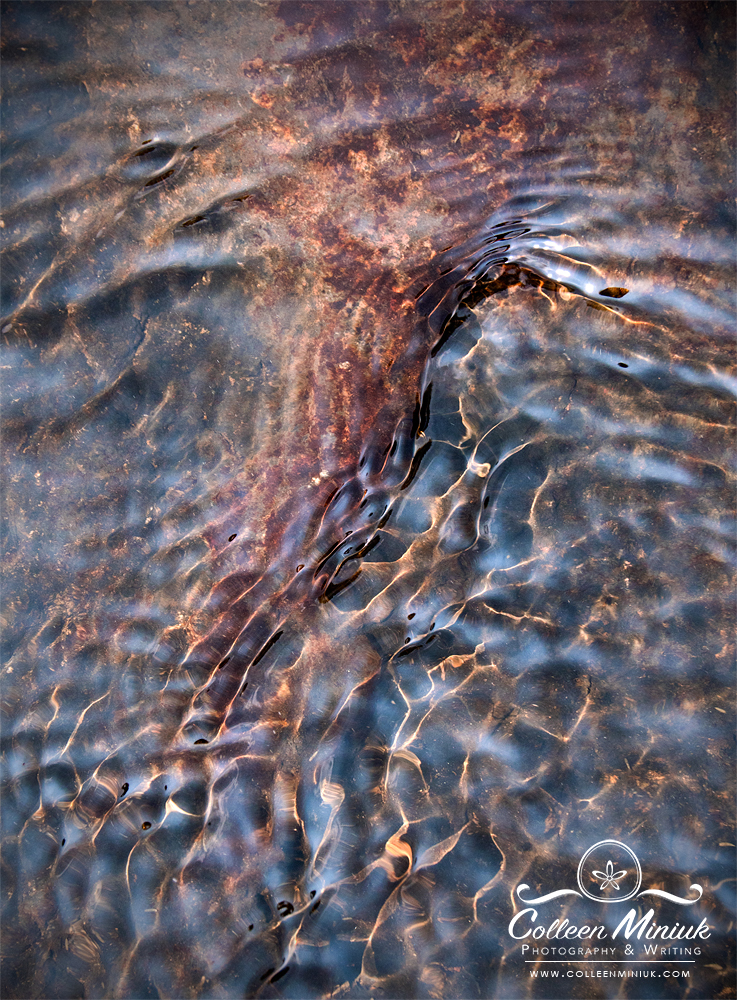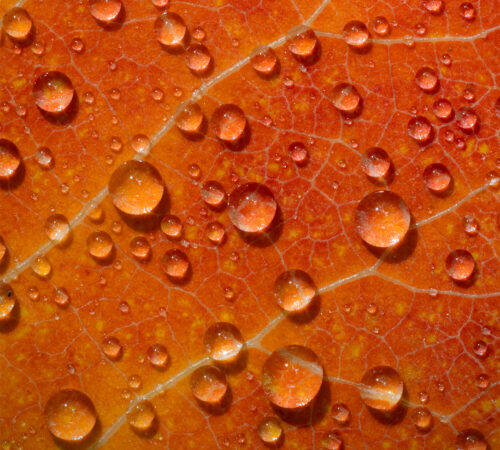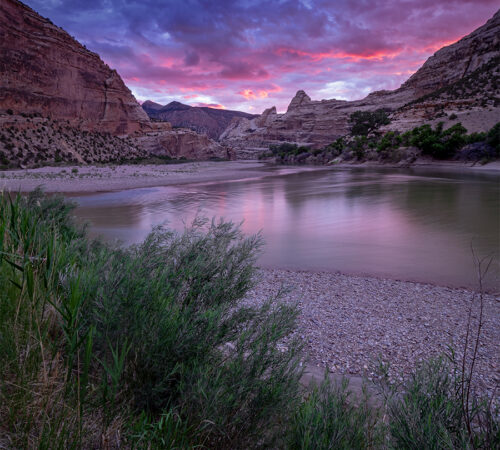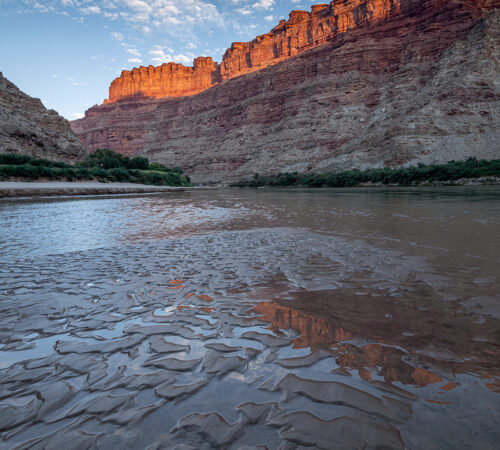Putting it into Words

Dear Bubbles:
In many of your presentations, you mention how you often title a photograph before you hit the shutter button. For someone who is quite literal, if this was a requirement, I would have zero images in my portfolio. Words do not come easily or quickly and I often need to ponder for quite a while to express myself. I am wondering which came first for you—writing or photography? And how would one improve their verbal self-expression? Would you suggest a creative writing class?
~Tongue Tied
Dear Tongue-Tied:
Good news! Titling your photograph before you snap the shutter is not a requirement for you or anyone! What works for me works for me. It doesn’t mean it’ll work for everyone. Each photographer should tap into their unique talents and skills to develop her own process in creating her meaningful work. I don’t care how you get to making images you’re proud of, just that you do however you do. As I often share in my presentations (and workshops), talking and writing my way to a title as I’m exploring a scene helps me understand what I’m responding to, and why, and guides my technical decision process in executing that photographic vision. That hasn’t always been the case, though…
Since I can remember, I have loved to write. As a child, I used to write my mom letters and shove them under my parents’ bedroom door. I started a family newsletter in fourth grade (complete with word search puzzles!). In college, I intentionally sought out classes that indicated grading would be based on essays, not multiple choice tests. There was nothing more I hated than multiple choice tests because, you see, if I overanalyzed each option long and hard enough—and I sure did!—I could make an argument why each of the multiple choices could be a right answer. It was maddening. (In hindsight, it was unrecognized divergent thinking, a valuable trait in creative pursuits…) During a creative writing class in my last semester of college, I declared I wanted to write a book someday but didn’t know what to write about. That dream faded into settling into a corporate job, a house, a new marriage, and living life.
As an outlet to the stress I felt in my software engineering job at Intel Corporation, I picked up my first “real” camera in my first photography class in late 2001. (I don’t count the disposable ones I bought at a convenient store right before I went on vacation which I had done for numerous years.) Beyond finger painting and paper mache masks in elementary school, I had little training in visual arts growing up. In fact, I was so bad at drawing, I transferred out of an art class in eighth grade to take—wait for it—Home Economics instead. I burned the bread during the baking assignment. I may have sewed the legs on my shorts closed too during sewing. Unfortunately, the administration wouldn’t let me transfer back into art class…
Anyhow! One of my favorite bosses at Intel (who I was proud to also call a friend) took an immediate interest in my photography, as new and unrefined as it was then. He not only appreciated art in general, but also his wife ran an art gallery in Scottsdale, Arizona. When I started selling my work in art shows around Arizona in late 2003, they were one of the first people to buy one of my prints.
My technical skills improved with time and eventually I started showing him slides from my travels around the Southwest. (You know, like a sneak peek at my new work for the VIP!) I remember a conversation we had on one of the frames. It went something like this:
“Where’d you shoot this one?” he said.
“At Waterholes Canyon near Page, Arizona,” I said.
“What are you going to call it?” he asked.
“I don’t know yet. Probably ‘Sunset at Waterholes Canyon,’” I said.
“Oh no! You’ve got to title it something interesting. Something like…” he said. “…like…’Sequential Erosion.’”
I laughed. “’Sequential Erosion?’ What does that even mean?!”
I hadn’t realized until that exchange that my titles were quite literal—and that more creative titles were possible. I spent many years thereafter agonizing over what to call my photographs. I mean, I couldn’t let my boss down!
I knew that titles like “Sunrise over the Grand Canyon” and “Evening Light on a Saguaro” were documentary in nature. At the time, documenting my existence in a place at a given time was pretty much all I was doing. I found my photographs—and subsequently the titles I assigned them—boring and unimaginative. This is not to say literal photographs with literal titles aren’t valuable. One look at any photojournalistic work indicates they are very much so. It’s that I personally wasn’t happy with my photography. I wasn’t educated enough to call it “self-expression” then, but I wanted the photographs I shared with the world to convey the same emotions I felt in nature. Awe, wonder, surprise, sadness, delight, all of it. But somehow the title “Amazing Sunrise over the Grand Canyon” didn’t seem to cut it.
It wasn’t until I started studying where new ideas came from, the creative process, and conceptual blending that I finally came to understand not just the creative value of “Sequential Erosion,” but also how to train my brain to get to a more meaningful name for my photograph beyond “Amazing Sunrise over the Grand Canyon” or “Untitled 202.”
Photography is an act of making order out of external chaos and organizing it into a frame. Think of titling a photograph as an act of organizing internal chaos. It’s an opportunity to sort out all the things going on in our brains and create individual meaning and perceptions based on our experiences with the external world. Using words to describe this helps me understand and articulate how my mind is reacting to waves, trees, flowers, rocks, butterflies—whatever “it” is “out there.” It gives me a clearer picture (pun intended) on how to arrange the elements in my picture based on how I’m connecting with the landscape.
I’ll visit a location without any expectation of making a photograph. By freeing up limited brain resources, I’m able to focus (pun intended once again) on paying attention, on noticing, on experiencing—not on forcing myself to take a photograph (one I’m likely to dislike later). I impose a “Three Second Rule” for myself. If something, anything, stops me from walking, hiking, or paddling for more than three seconds, I am required to stop and analyze the reason for my pause. I commit to making at least a single frame of “it,” a photograph that represents whatever reason I come up with. My brain is responding to something out there. It’s up to me to figure it out. It’s like a treasure hunt!
I first ask: “To what are you responding to and why?” Early on in my photography practice, I’d look at a flower and say, “Wow, that’s pretty” and then snap an image of it immediately (then walk away in search of another scene or subject). I’d make 100’s of images of “pretty” things, but when reviewed my pictures later, I felt disappointed in the results. That flower had much more meaning to me in the field. By only giving it a passing thought, though, that’s exactly what I captured—nothing more than a passing thought. My photograph didn’t capture the essence of the moment or scene.
If we wish to create more meaningful titles, which for me, inspires more meaningful images, we have to create that meaning first before we snap the shutter. The water, trees, flowers, rocks, and butterflies aren’t going to do it for us. Nature inherently has no meaning. Humans establish this layer, this relationship, with nature through personal interests, judgments, and intentions. While we each create meaning among the external world, we do not create the same meaning from the same things. This is why when you show up at a workshop, ten participants standing in roughly the same place will photograph in completely different ways with completely different results. As Anais Nin said, “There is no one big cosmic meaning for all; there is only the meaning we each give to our life, an individual meaning, an individual plot, like an individual novel, a book for each person.” If I might add, in our case, a portfolio of photographs for each photographer.
While a flower may in fact be pretty, it’s not nuanced enough to establish a deep connection with it. Dig deeper. Push your analysis further. Ask “What makes the flower pretty? Why did you noticed THIS flower and not THAT flower?” Maybe it’s the way the light and shadow stripes across the center of the flower head. Maybe it’s an interesting pattern on the petal. Or maybe it’s the relationship between multiple flowers. Now I take the time to collect five different types of inventories:
- Visual: Literally, what exists in the scene? What visual elements are present?
- Spatial: What are the relationships among the different visual elements you picked out? Which are closer to you? Farther away? How do the relationships change as your perspective shifts?
- Temporal: What time is it? What season is it? What moment are we in?
- Sensory: How are all of my senses—not just my eyes—responding to this exact moment?
- Inner: How do I feel about what I’m experiencing?
Then, to move from literal and documentary to creative expressions, I frequently tap into metaphorical associations. As Minor White said, “One should not only photograph things for what they are but for what else they are.” So I ask of the flower, “What else is it?”
Pay attention to yourself as you observe your surroundings. Write the words that come to mind down. They don’t have to make any sense yet. Just get them out of your head. There are no wrong answers or words. Do not judge your response, just notice it. Do not call them good, bad, silly, or stupid. There are no photography judges waiting to buzz you off a location if you don’t choose the perfect words. The only one judging right and wrong is you. It’s only “wrong” if YOU don’t like it or doesn’t think it fits what you’re trying to visually express. In fact, I challenge yourself to come up with the “dumbest” and “silliest” thoughts possible. That’s where creativity lives. Let it flow.
Let’s try this with the word “sunrise.” What else is a sunrise? Dawn. Daybreak. Morning. It signifies a new day. A fresh start. Hope. The fact that the sun rises every day means (to me) that hope prevails. So if I’m standing on the edge of the Grand Canyon at sunrise feeling hopeful about something—related or unrelated to the Grand Canyon, I might call my photograph “Hope Prevails.” If I’m in the same place and suddenly the song “Sunrise” by Norah Jones comes to me, which will trigger memories of my beloved cat Nolan who passed away in August 2018 (Norah was his favorite singer…), I might call a similar composition “Eternal Memories” instead—which associates with the longevity of the cliffs and my time in the canyon just the same.
Do I expect my viewers to understand this background when they see my photo flash by them in their Facebook feed for three seconds? With or without the title? Absolutely not. How people interpret my photograph is largely out of my control. Me creating a photograph for reasons that move me emotionally and spiritually is entirely within my control, though. Is it possible someone may think my association between my cat and the Grand Canyon is silly. Sure. Do I care? Not even a skosh. It’s my life, my photographs, my art. I’ll do what I wish with them including naming them whatever I want. I’d advise you to do the same.
Keep in mind the answers you come up with will originate from all the thoughts and perceptions you’ve stored in your brain over your lifetime. Creative experts believe it only take putting together two existing things or ideas in different way. (See It Takes Two for a description of how that process works.) According to creative experts, the more thoughts you’ve fed your brain, the more likely you are to come up with something fresh and imaginative. For example, if you’ve never heard of Norah Jones, you’re not likely to associate her music with anything, let alone my cat or the Grand Canyon.
So by all means, yes, take a writing classes. Not just to refine how you express yourself verbally, but also because learning something new will stretch your mind in ways that will trigger new ways of connecting with the world (and ultimate affect your photographic expressions). While you’re at it, attend a painting classes. A cooking, sewing, or drawing class too! Read books. Watch movies. Study art at an art gallery. Any and every experience you have in your life is a chance to expand your vocabulary and the raw materials you store in your brain. (Please note, during our ongoing pandemic, I encourage you to keep yourself and others safe. Wear a mask. Wash your hands. Stay six feet away from people. And limit your time indoors with other people.)
Sometimes I can easily summarize my thoughts about a scene into a few-word title right away. Sometimes I have to write a full paragraph, then pull a shorter title out it. Sometimes I write a haiku (here’s how I approach that: Help-U Haiku). Sometimes I write a book. (Dreams may fade, but they don’t disappear…) I tap into writing because it’s a skill I developed through my earlier experiences. Words makes expressing myself in a visual way easier.
Sometimes I can’t find the right words and let intuition take over. This is especially when I find myself in the middle of a fleeting moment, at a time and place where analyzing a scene might mean I miss the situation altogether. Let’s be clear, I’m not going to sit down and write a haiku if a jaguar runs across the street under a double rainbow…I’m going to photograph first, title second.
As I’m talking and writing, I’m treating the words like clues. I associate verbal language with visual language. In other words, what words I can turn into a photograph using photographic techniques?
For example, let’s say you’re walking along a stream and you see a beautiful caustic water pattern dancing (as I did in the photograph at the top of this post). When I saw this, the first word that came out of my brain was “electrifying.” What comes to mind when you hear “electrifying?” I think of lightning. Bright. Shocking. Drama. Definitely not peaceful, calm, dull.
How would you convey “electrifying” through photographic techniques? Better yet, how would you convey bright, shocking, drama–and avoid conveying peaceful, calm, and dull? Would you use a fast or slow shutter speed? Over or underexposure? Vertical or horizontal orientation? To make these decisions, we first need to know how people perceive the results of fast and slow shutter speeds and the differences between vertical and horizontal orientations.
In the same way attending a writing class will help you expand your vocabulary based on experiences, so will educating yourself on visual design so that you’re better able to associate verbal language and human perceptions with visual language. Check out books by Rudolf Arnheim’s “Art and Visual Perception: A Psychology of the Creative Eye” and Richard Zakia’s “Perception and Imaging: Photography—A Way of Seeing”. To get a taste of how this works, though, have a look at my recent webinar on “Human Perceptions in Composition”: https://www.youtube.com/watch?v=3mDYFq2J5EM. (I’m working on a book about this with my friend and photographer extraordinaire Guy Tal. He and I have taught “Lens and Pens” writing workshops for photographers, which included this approach, together as well.)
Lightning is a sharp, thin shape. It’s not soft and flowy. With that in mind, I’d use a fast shutter speed to render lightning-like lines in the water patterns. The word “bright” might lead you to increasing exposure such that the important parts of the frame are, in fact, brighter than the rest of the image. People (i.e. your viewers of your photograph) will perceive more drama and tension in a vertical orientation than a horizontal one because the visual elements tend to feel more constrained in the vertical space (even though it’s the same amount of real estate as a horizontal). Horizontals feel more peaceful because the elements have more room to breathe. So vertical it is.
While coming up with a title before I shoot it clarifies my vision and influences the technical choices I make. It’s not always where I end up, though. I consider it merely a starting place. As part of the creative process, it’s important to give ourselves freedom to ebb and flow with our ideas as we explore our subjects and scenes. If I make a photograph of blurred water, and the results don’t match my vision, I try something else. I often try the extreme opposite (like freezing water instead) and ask myself if I like that better. I’ll also change the words in my title accordingly as I go. Getting locked into a specific vision, especially if you aren’t sure about it, will lead only to frustration. And photography is supposed to be fun, remember? I love seeing where this process takes me, especially when it leads me into new directions I hadn’t initially considered. I love surprises! So when I initially approached this stream and water pattern, I started with “electrifying.” I ended up titling it “The Pulse of Life.” Which certainly can be electrifying at times.
In my writings, namely in my books, I’ve spent hours debating the meaning of a single word and whether it fits in a sentence and paragraph I’m working on. Sometimes getting it just right takes time. When it comes to your photography, take all the time you need. This isn’t a race—and don’t turn it into one unnecessarily.
If this word-based approach feels like something that could help you make more expressive images, then give it a good college try. In fact, I’d encourage you pick out one word in the dictionary and play games with it for the day. The Merriam-Webster dictionary app features a “Word of the Day” which can be helpful if you struggle to get started. Or just thumb through your favorite book and pick a word from the page. Any word! Specifically ask, “What else is it?” (check a thesaurus for synonyms) and “How would you convey that word photographically using the various techniques and skills in your own tool box?” Play around with ideas. Test different techniques out. See what transpires. And don’t let failure stop you! You may feel clunky putting words out there. That’s OK. As with all things, you’ll get faster and better at as you practice. In time, you’ll see the literalness of your titles and your images, dare I say, sequentially erode away…
Be well, be wild,
~Bubbles
Have a question about photography, art, and/or the creative life? Need some advice? Looking for inspiration? Send your question to Dear Bubbles at colleen@colleenminiuk.com to be possibly featured in a future column post. (If you’d prefer a different display name than your real first name, please include your preferred nickname in your note.




